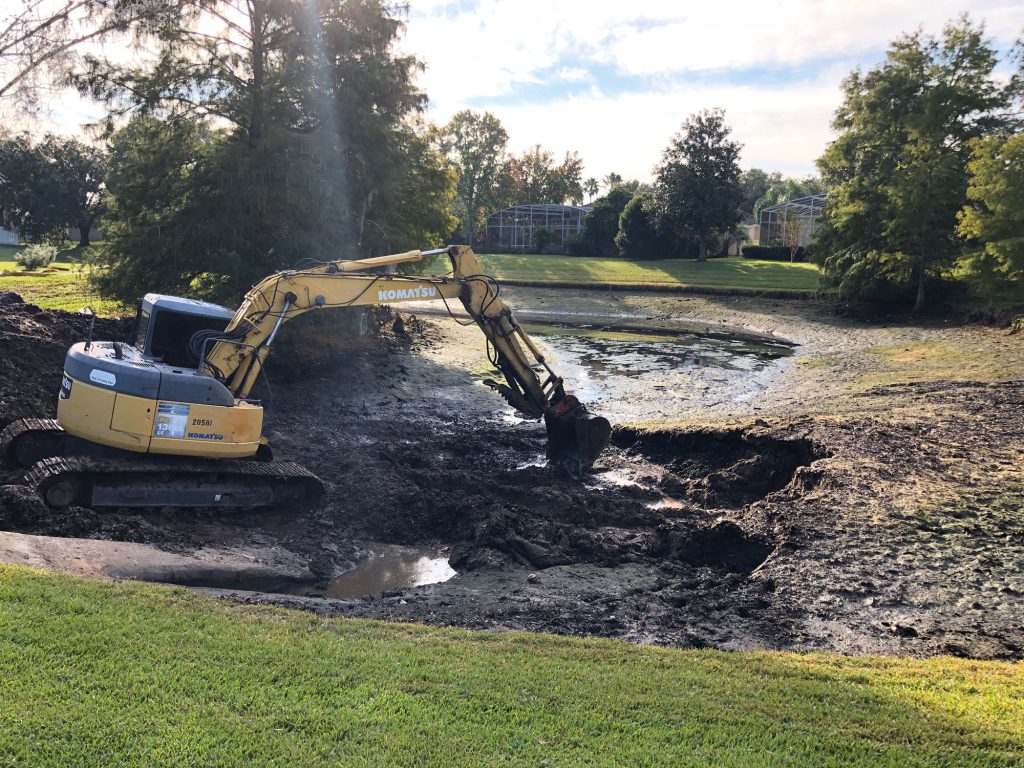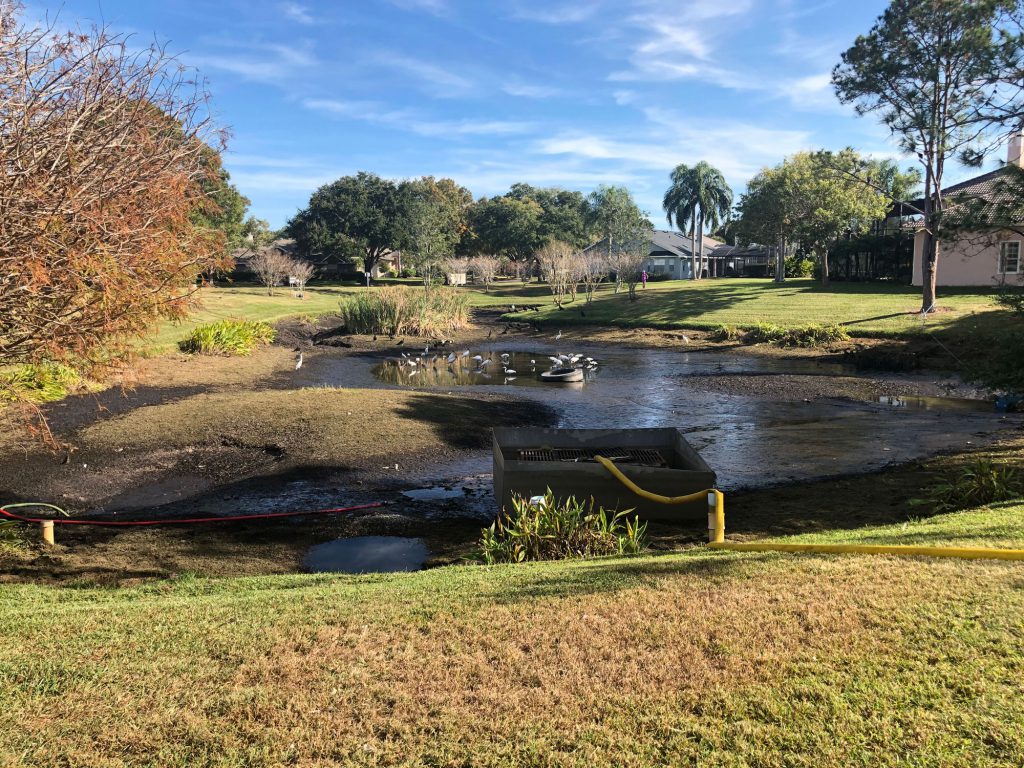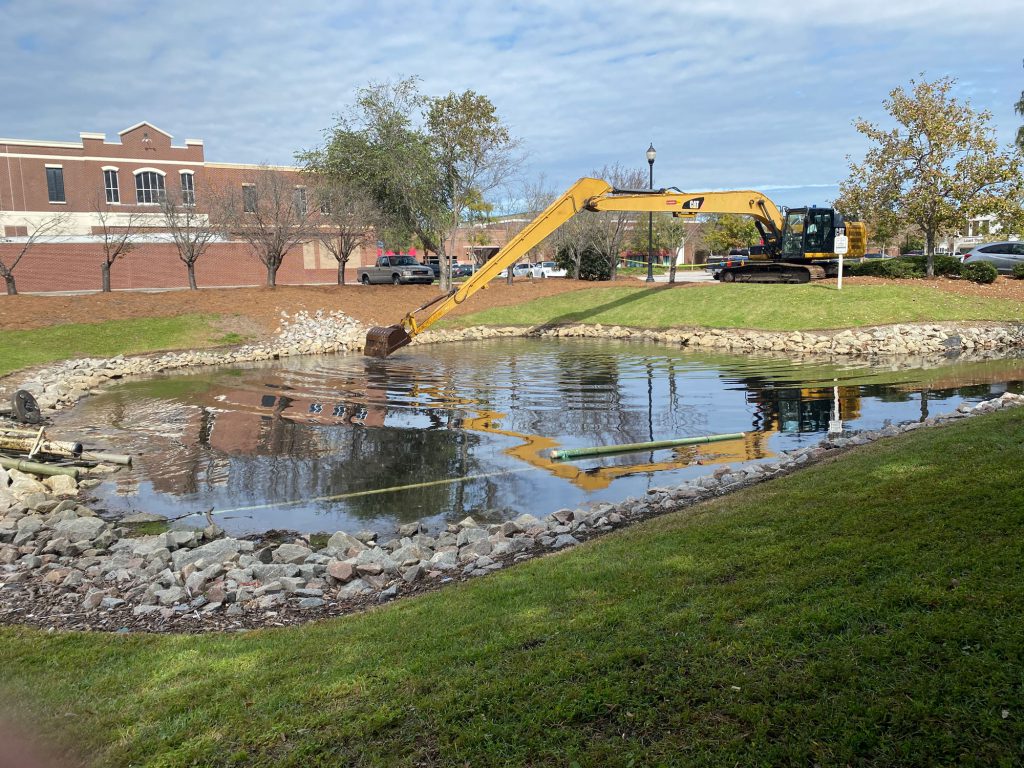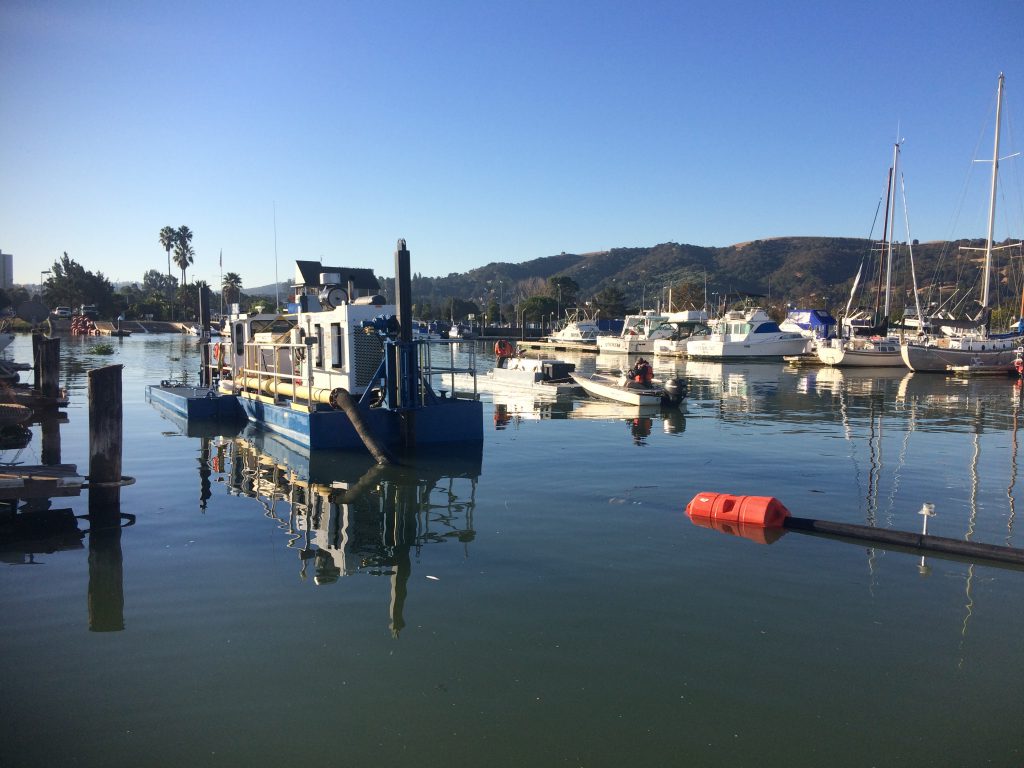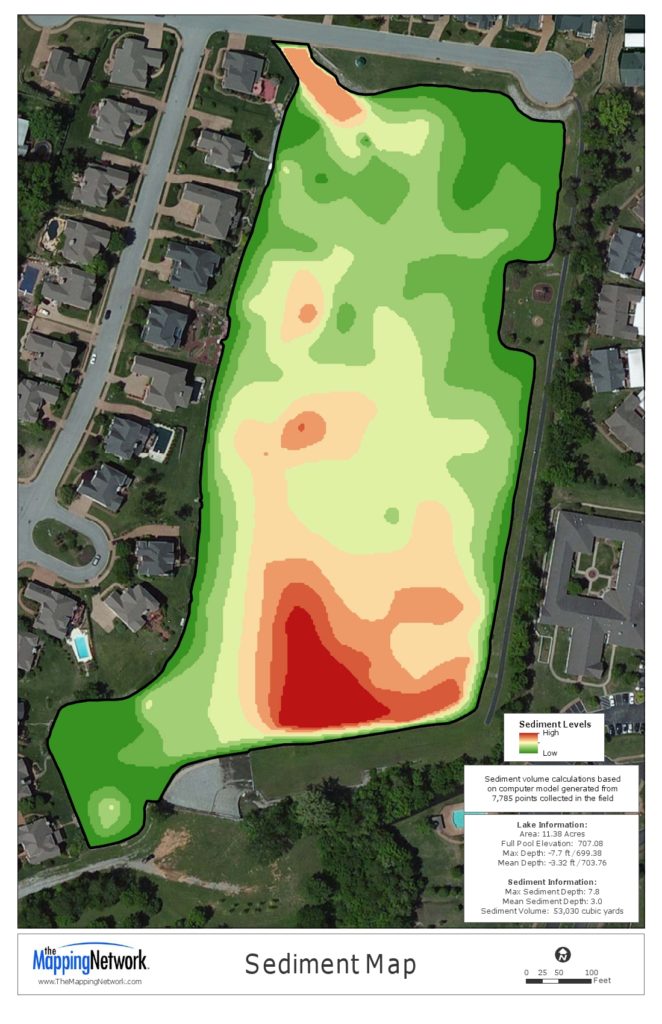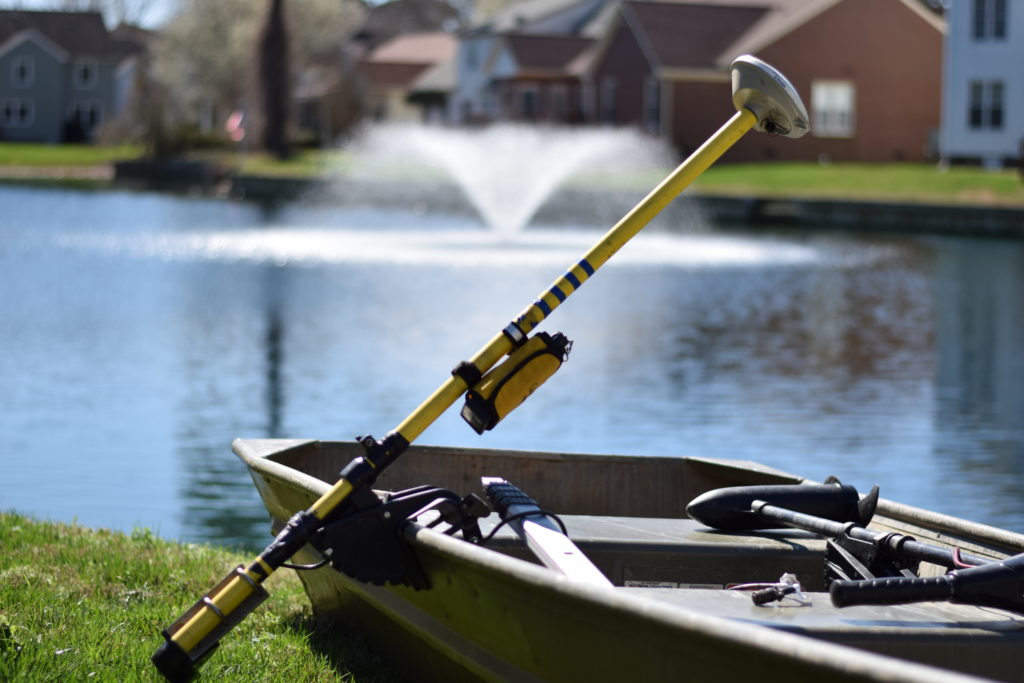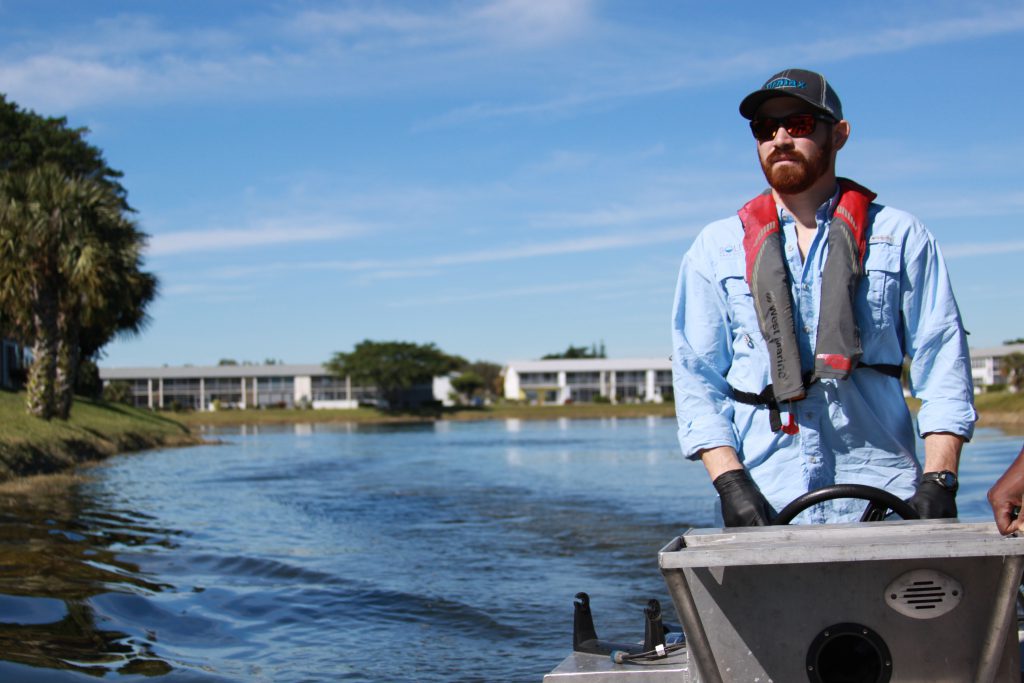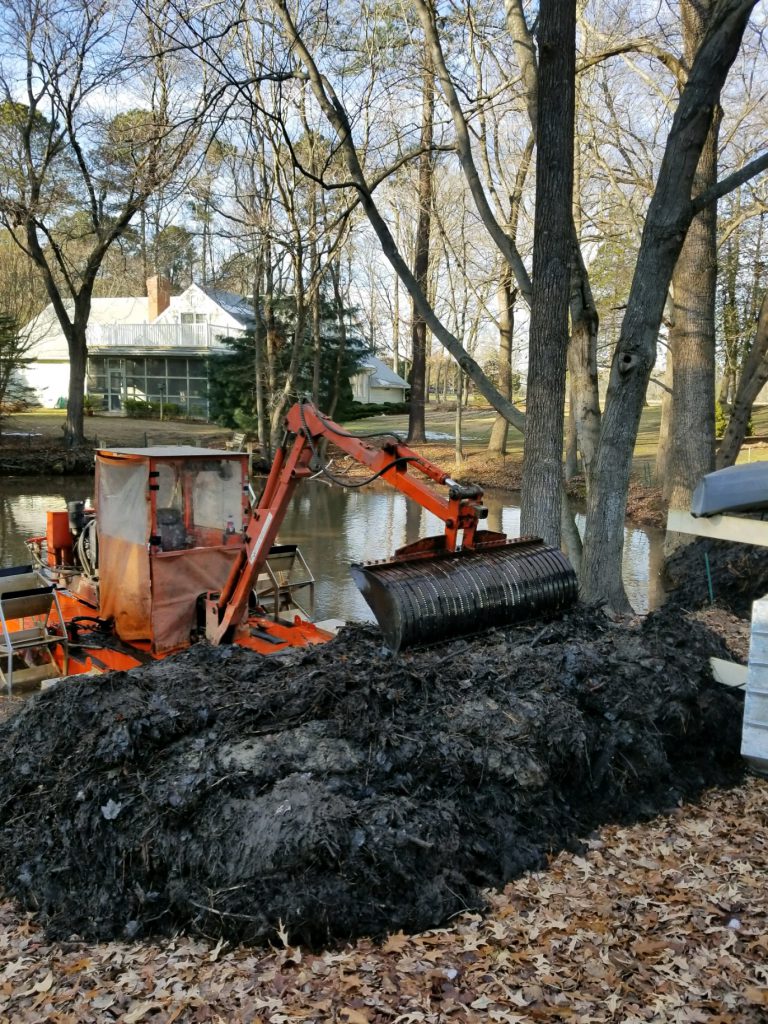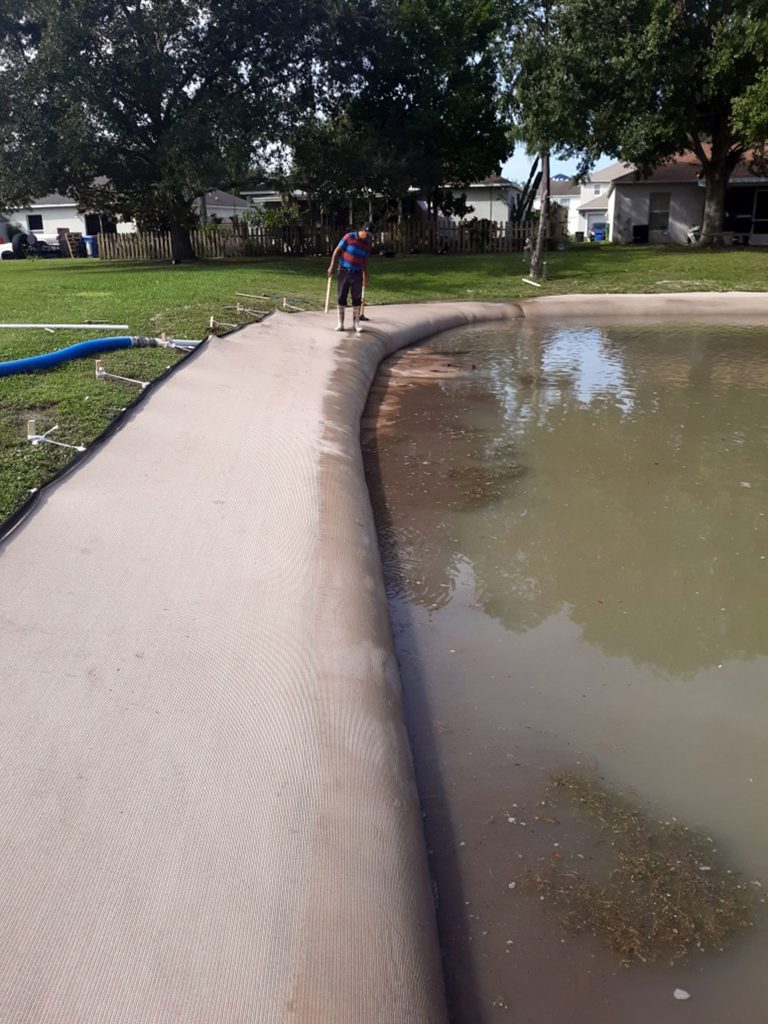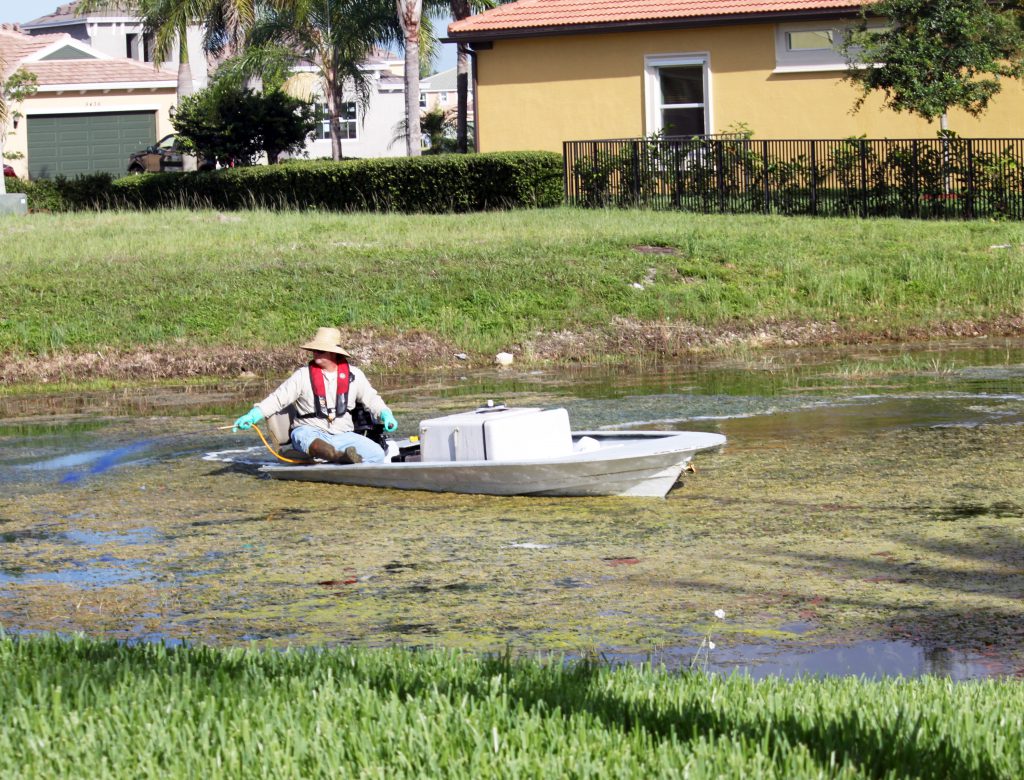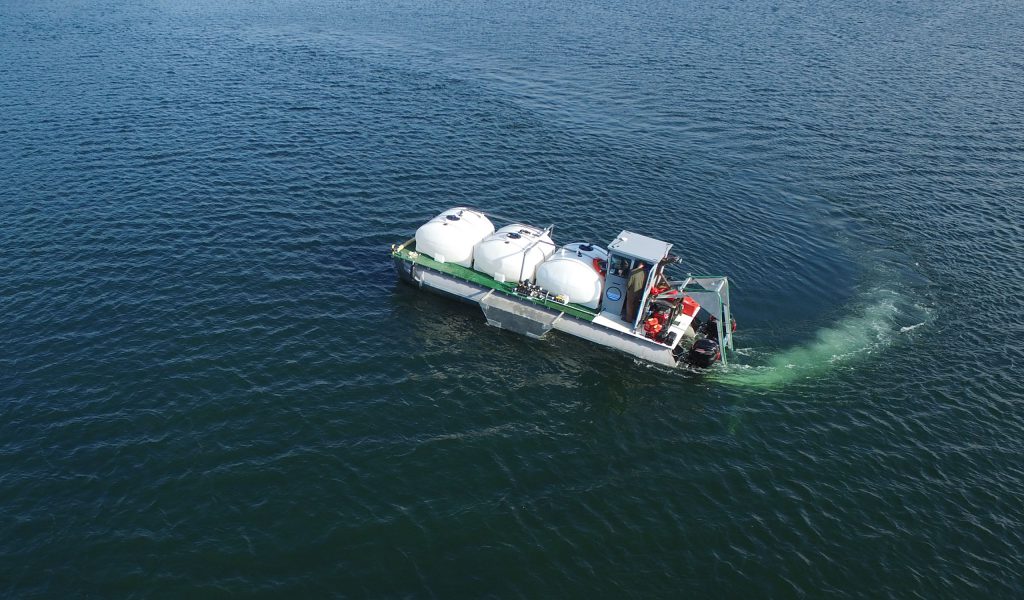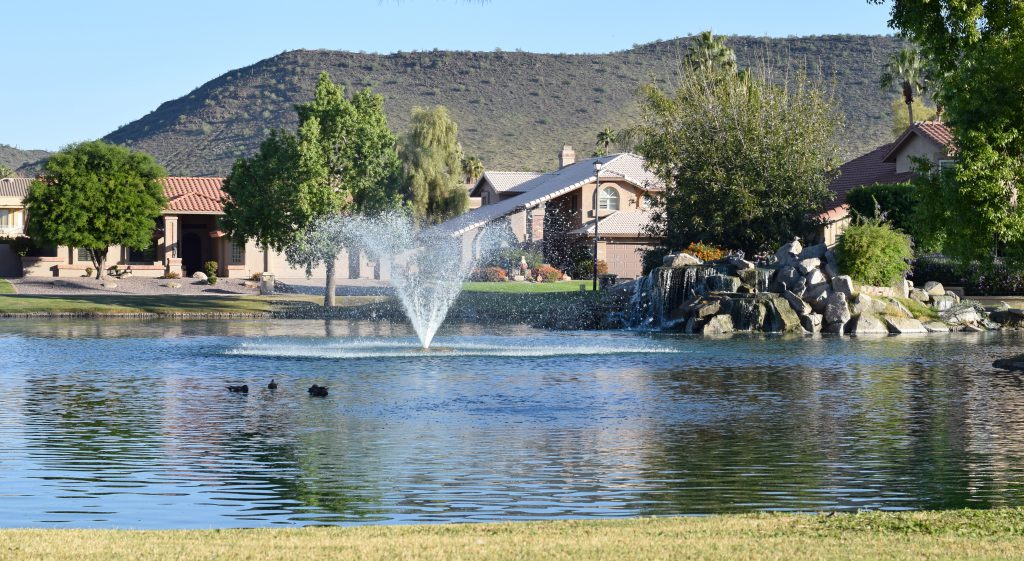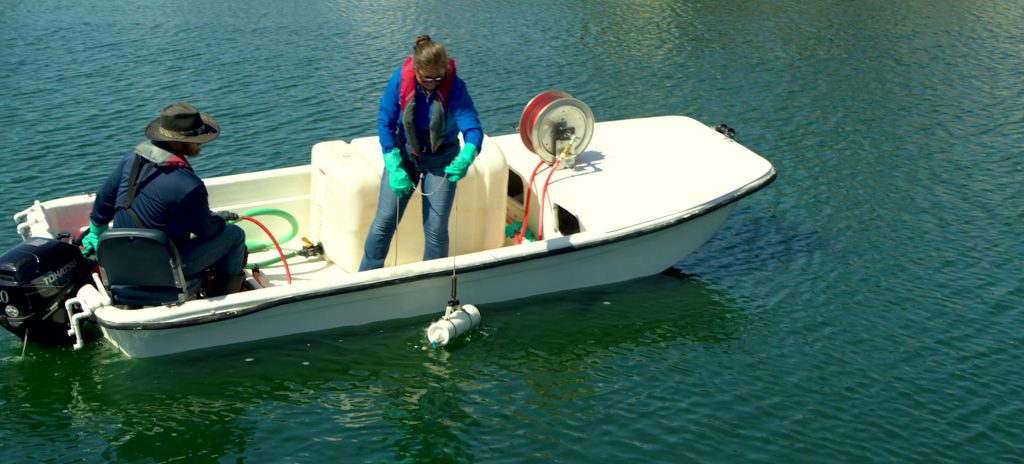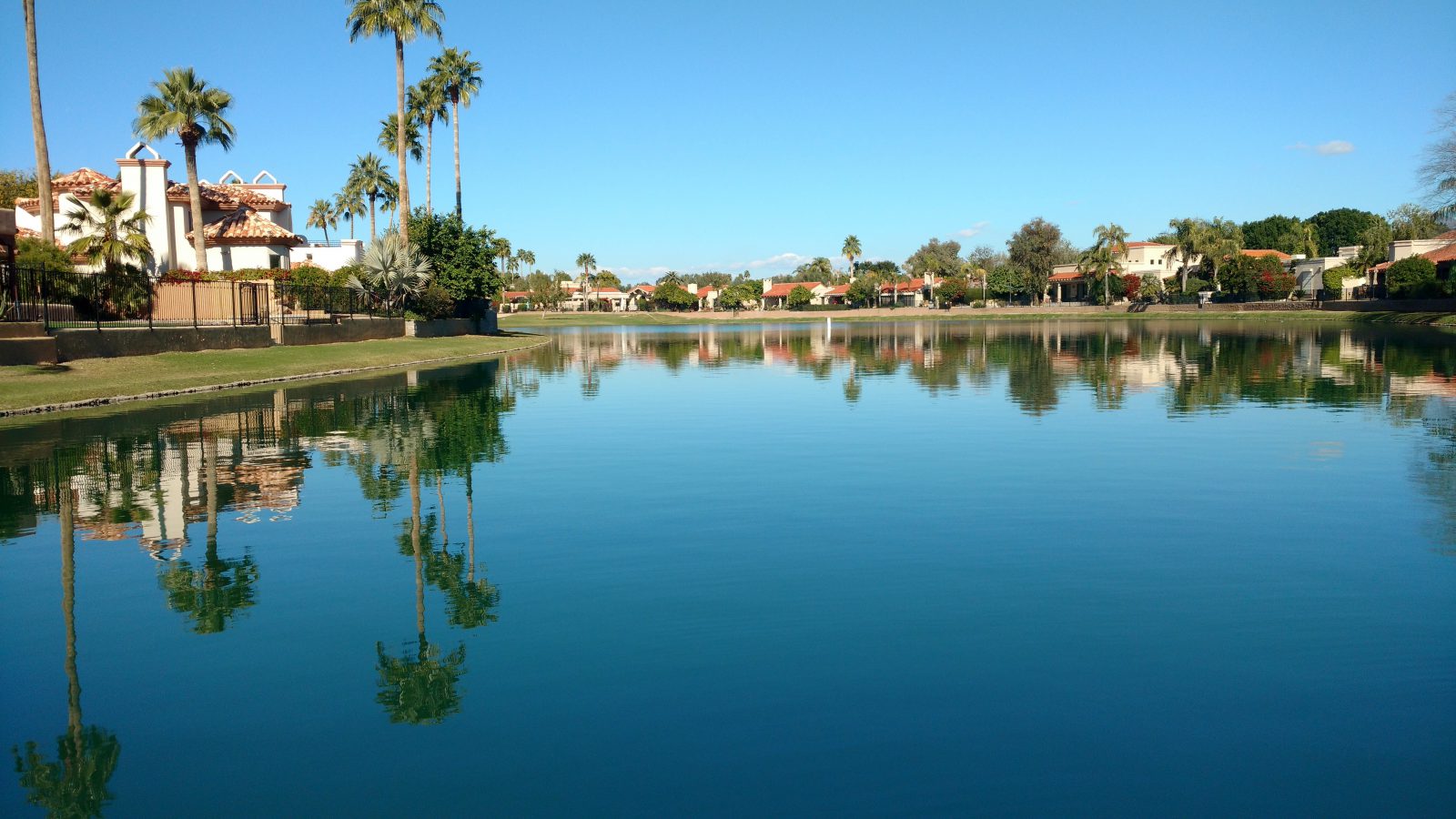
How Much Does it Cost to Dredge a Pond?
Whether you oversee waterbodies in a community association, on a golf course, a municipality, or a private property, you’ve likely noticed changes in your lake or pond year over year. It may seem cloudy or murkier, or perhaps it’s more prone to algae growth or flooding. Maybe your shoreline keeps receding, reducing the size (and value) of your property in the process. All of these signs point to severe muck and sediment accumulation, which occurs naturally over decades. With very few solutions left to reverse this problem, professionals usually recommend dredging.
Stakeholders often cringe at the thought of a looming dredging project—it’s invasive, messy, and, most of all, expensive. Moreover, it can be extremely difficult to determine how much it will cost to dredge a pond without a professional evaluation and in-depth planning.
The most asked question when considering a project is “How much does pond dredging cost?” The answer to this question will depend on a number of variables unique to each property, but we’re breaking it all down to help you understand the many factors that make dredging so costly, and the undeniable importance of preventative maintenance.
What Is Dredging?
Many lake and pond managers do not recognize the complex nature of their aquatic ecosystems. Our waterbodies are constantly changing and, in a sense, aging. Over the course of two to three decades, they begin filling in with sediment and debris due to both natural and man-made forces (just like a newly dug hole will eventually fill in). This results in loss of depth and volume, flooding, nutrient loading, and other concerns that further expedite the decline in aquatic health.
The term “dredging” may mean different things to different people, but ultimately refers to the removal of muck, sediment, detritus, or organic matter from the bottom of a waterbody. This management method is used to restore depth and volume, as well as remove excess nutrients and pollutants from the ecosystem.
How Do I Know If My Waterbody Needs Dredging?
Dredging projects are expensive, unsightly, and inconvenient, which can have rippling effects, particularly in HOAs, apartment complexes, and other communities. It is all too common for stakeholders to raise dues and fall short on other community upkeep efforts in order to fund a dredging project. This can lead to complaints, drive away residents, threaten a community’s reputation, and create shocking financial risks.
Because most stakeholders have little idea how much it will cost to dredge a pond—or that they need to dredge one at all—they don’t begin budgeting soon enough. In fact, many stakeholders have zero funds available and must take out considerable loans or save for several more years, all the while watching the continued decline of their waterbody. This tends to be the case when action is not taken until problems have already passed the point of no return.
Here are a few signs your waterbody may need to be dredged:
- Flooding occurs during rainstorms
- Waterfront property appears to be “shrinking”
- Shoreline erosion and steep, crumbling banks
- The emergence of sediment islands
- The growth of trees and shrubs in the water
- Bottom muck, cloudiness, and bad odors
- Chronic algae and weed issues
- No record of dredging in the last 20-30 years
These indicators suggest that it might be time for a professional evaluation.
Types of Dredging
There are multiple types of dredging equipment available to accommodate various properties, environmental restrictions, budgets, and waterbody types—each with their own benefits and challenges.
Mechanical Dredging
During mechanical dredging projects, long-reach excavators, semi-trucks, and trailers are brought into the project zone to drain all water from the lake or pond and scoop out hundreds of pounds of muck. This style of dredging is impactful and allows full visibility while working around underwater drains and equipment
Mechanical dredging also has its drawbacks. By draining all water, native plants and wildlife are displaced. Reestablishing aquatic habitats can increase overall project expenses.
Mechanical projects might be an appropriate solution for more rural properties, but are much more intrusive and unsightly in community areas—often resembling a construction zone. Building ramps or removing landscaping, sidewalks, and other community infrastructure may be necessary to gain access to the waterbody. In some cases, a crane must be used to hoist equipment over buildings, trees, and obstacles. All of these considerations are built into final lake dredging costs.
Hydraulic Dredging
During the hydraulic dredging process (also referred to as liquid dredging), water and materials are pumped through a specialized tube—much like a vacuum—to a holding tank where dredged materials are contained and filtered. As water trickles out, it is returned to the lake or pond via tubing.
Hydraulic dredging is an excellent solution for metropolitan areas and community associations that are unable to accommodate large equipment on site. Unlike mechanical methods, hydraulic dredges can be positioned off-site, connected by hundreds or thousands of feet of tubing—sometimes more than three football fields worth if needed. This makes dredging less intrusive in populated areas and helps preserve the plants and wildlife present in the water.
However, the lack of visibility associated with hydraulic dredging makes navigating the bottom more difficult. It’s common to encounter stormwater equipment, drains, concrete buttresses, irrigation and sprinkler systems, and other unexpected objects or infrastructure under the water, which can lead to potential damage, project delays, and increased expenses.
Budget Considerations
The benefits of dredging are clear, but many stakeholders do not understand the various considerations that go into a price estimate and may underestimate how early they should begin budgeting for these projects. How much does pond dredging cost? Here are some of the top factors:
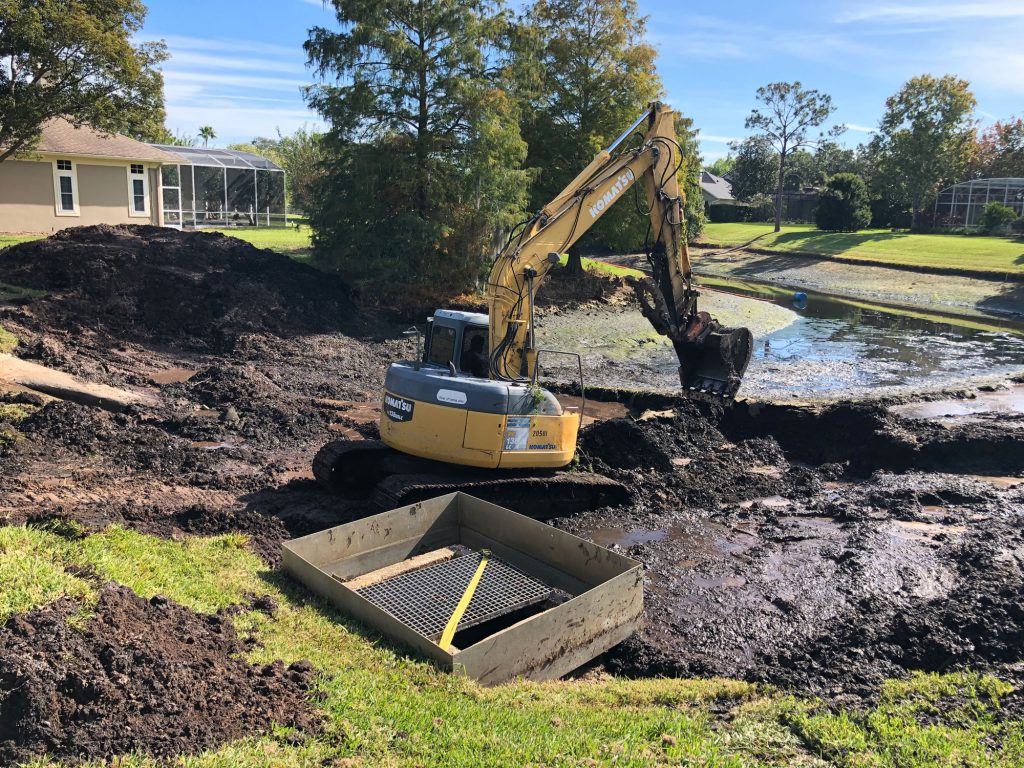
Equipment, Overhead, & Safety Costs
State-of-the-art dredging equipment is designed to endure difficult environmental conditions. Premium insurance and diligent maintenance throughout a project is necessary to ensure excavators and tubes stay in optimal condition. Dredging companies also utilize costly specialized spill kits that absorb any fuel leakage to prevent water contamination.
Dredging projects are very labor-intensive and require highly-trained professionals. Typically, 4-6 experts are on-site for the entirety of the project, which can take 1-3 weeks or more to complete. Costly licenses and certifications must be maintained in order to operate the equipment.
Before mobilization begins, professionals carefully work out project logistics, but there are many unknowns that simply cannot be accounted for. For example, unexpected rainfall can cause equipment to sink into bottom sludge and get stuck. Uncovering clay or plastic liners during the process can make restoration efforts more difficult. These and many other unpredictable events may require pivoting and additional funds.
Bathymetry & Dewatering Costs
When planning a project, professionals start estimating lake dredging costs by determining how much material needs to be removed and what the material is made of. Measuring the level of build-up can be challenging, so dredging experts rely on bathymetric mapping to create a three-dimensional model of the waterbody that reveals depth, bottom contours, and highly-accurate volume calculations. The average project removes around 4-6 ft of muck, and on some occasions 8-10 ft or more! Prices can increase dramatically in correlation with muck depth.
Material composition is important because it guides the type of equipment used for the job. Sandy, gravelly materials dry out much faster than muck and sludge. “Soupy” materials must be handled and disposed differently than dense substances.
When dredged materials are deemed too watery, they may require dewatering prior to removal from the site, adding additional costs to the project. Expensive geotextile dewatering bags and specialized dewatering tanks allow water to seep out; however, this process can take a few days to many months depending on material composition and how much was removed.
Furthermore, the outer layer of decomposing materials often hardens into a shell that locks in moisture. To keep the drying process on track, professionals must return to the site on a regular basis to turn over the saturated piles, increasing the overall cost to dredge a pond.
Lab Testing & Disposal Costs
Once the drying process is complete, the materials are typically removed from the site for disposal. While this may seem like a straightforward process, complex regulations dictate where, when, and how materials can be disposed of. These regulations can vary by state.
Before material disposal, laboratory tests must be conducted to identify the presence of metals and contaminants. Depending on the results, landfills may impose additional fees to dump the material. Environmental hazards are surprisingly common in lakes and ponds, particularly those near construction and urban development sites.
The presence of invasive plants or animal species like quagga mussels can add additional challenges and increase the cost to dredge a pond. Depending on the situation, invasives may need to be managed before a dredging project begins, as well as thorough equipment and material inspections prior to disposal. This prevents spread into other ecosystems across the region.
To cut lake dredging costs, stakeholders can choose to dispose of dredged materials themselves. Clients with several acres of land may be able to transport materials to designated areas on their property without concern for drying. However, compact properties or those in metropolitan areas face additional challenges and inconveniences when choosing to dispose of materials on their own.
Landfills will charge significantly higher rates if materials are too saturated with water. This means the longer that stakeholders dry out their materials, the more money they can save. Unfortunately, this also means that dredged materials must remain on-site for weeks to months, creating an eyesore, damaging grass and landscaping, and releasing bad odors from decomposed organic materials, dead fish, and animal feces. Clients may purchase deodorizers to inhibit unpleasant smells, though this requires additional funds.
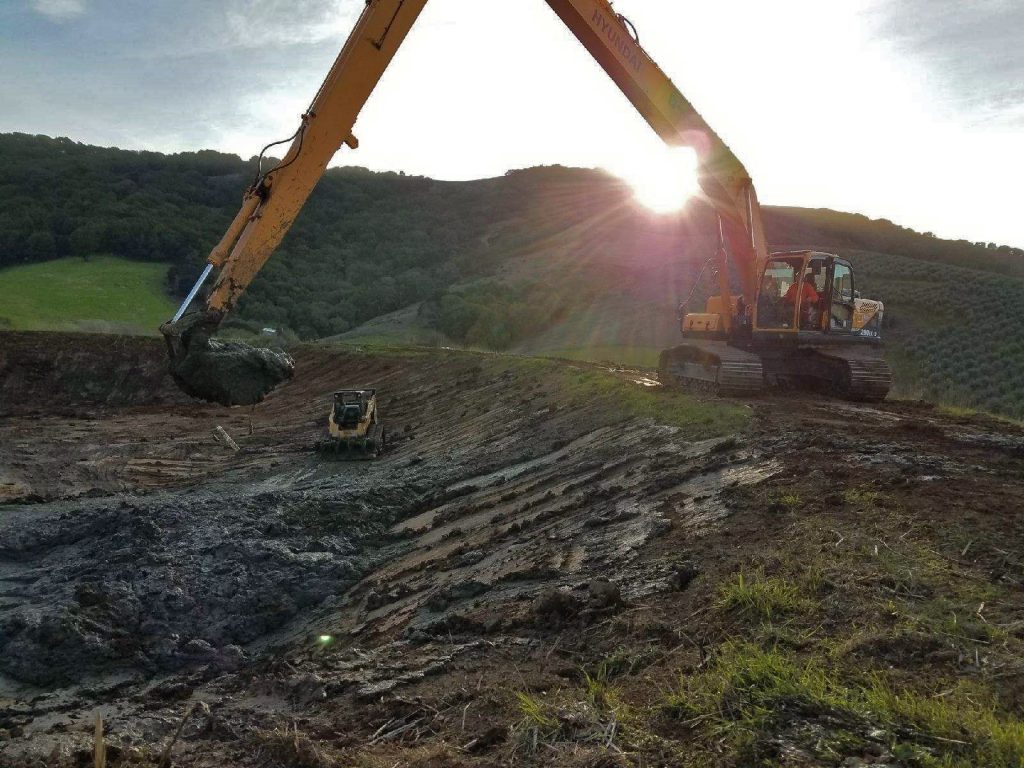
Safety & Permitting Costs
No matter the method used, dredging is messy and can cause significant environmental stress by displacing native wildlife, interfering with the natural processes, and releasing hazardous materials from the soil. Reputable companies often consult with environmental firms and the US Army Corps of Engineers throughout the entirety of a project to monitor and mitigate environmental risks, including the downstream impact.
Certain projects may require special permits, which can be particularly complicated and costly to obtain. Permits can also be revoked in the face of new weather conditions or project delays, further impacting the project budget.
How Proactive Management Can Cut Lake Dredging Costs
The end of a dredging project does not mean responsibilities are complete. It’s important to establish a plan that not only predicts future dredging needs but also prolongs them for as long as possible. Without proactive strategies in place, stakeholders may see their waterbody prematurely return to its prior condition.
Professionals utilize many cost-effective tools, technologies, and services to monitor and support healthy, balanced waterbodies. These are most effective when used as part of a long-term management approach. When working on an annual basis, professionals can strategically plan and implement the right solutions at the appropriate times of the year—and make adjustments as internal or external conditions change. In addition to prolonging the need for dredging, these and other annual management services help reduce long-term expenses:
Bathymetric Assessments
Professionals rely on bathymetric data during the planning stage of a dredging project, but bathymetric mapping is most beneficial when used as a proactive tool. When conducted every 1-3 years, experts can carefully monitor sediment accumulation and implement preventative solutions while the build-up is manageable. Most importantly, the data can be used to calculate when the next dredging project may need to take place and inform the budgeting process.
Biological Augmentation
During this process, biological bacteria are applied to the water. These beneficial organisms feed on the nutrient-rich organic matter at the bottom, helping to eliminate muck and sludge naturally. Also referred to as biological dredging, this process can be used preventatively to maintain depth and healthy water quality conditions.
Hydro-raking
Mechanical hydro-rakes are sometimes mistaken for dredging equipment, but they only reach about 10 ft below the water. Hydro-rakes physically remove the top layer of leaves, sticks, and detritus off the bottom of ponds or culverts. Hydro-raking is best used as a spot treatment to prevent build-up and allow water to flow more freely.
Shoreline Restoration
Lake and pond shorelines erode and become unstable without proper maintenance. The resulting sedimentation contributes to muck and build-up. Introducing beneficial buffer plants along the edge can help keep soil in place and slow runoff that degrades the shoreline during rainstorms. Waterbodies with significant shoreline damage may require complete restoration. Bioengineered shoreline technologies like SOX Erosion Solutions help reshape and anchor the eroded soil to the bank for improved stability and aesthetic value. In some cases, materials removed during hydro-raking or dredging projects can be used to rebuild the shoreline.
Weed & Algae Management
Maintaining the growth of algae and vegetation helps slow the cycle of growth and die-off that promotes bottom muck. Mechanical harvesters use a specialized cutting mechanism to physically remove plant biomass from the water. For more severe problems, highly-targeted herbicides or algaecides may be applied to inhibit aquatic weeds and algae development.
Nutrient Remediation
Nutrients support the entire food chain, but in excess levels, they can fuel nuisance growth and poor water quality conditions. Nutrient remediation products safely interrupt the natural process of nutrient uptake to prevent weed and algae growth, as well as the subsequent cycle of decomposition and muck development.
Dissolved Oxygen
Even underwater, oxygen is essential for a healthy ecosystem. In addition to supporting beneficial organisms and wildlife, oxygen helps maintain appropriately balanced nutrient levels. Floating fountains and submersed aerators can be installed to increase dissolved oxygen and better disperse it throughout the waterbody for maximum impact.
Water Quality Testing
Like bathymetry, water quality testing reveals a wealth of information about what’s going on below the surface. Countless physical, chemical, and biological properties come together to form the waterbody on your property. Professional laboratory scientists use data to detect potential imbalances in the water column and measure the progress of management efforts.
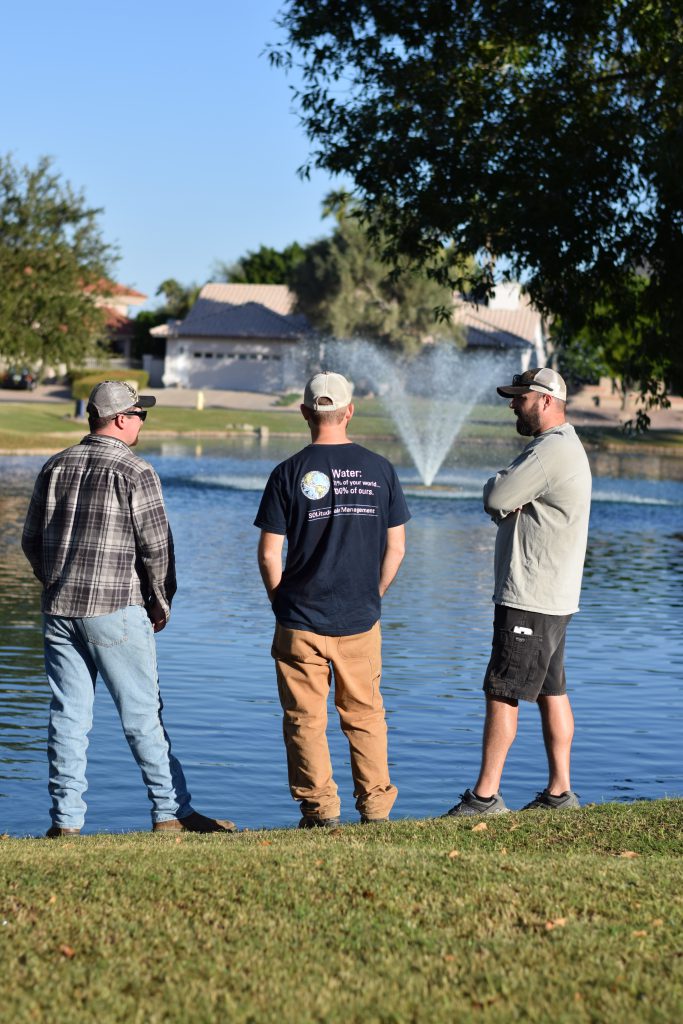
Education
Understanding where lakes and ponds come from, why they change over time, and how to properly manage them is essential to keeping long-term costs down. Each of us can be more mindful of our impact on nearby lakes and ponds and make small changes in our daily routines to better protect them.
Protect Your Investment
It’s clear that all waterbodies will need to be dredged at some point, but the lack of clarity around pricing can make it a frustrating investment in your property. With so many factors at play, it can be difficult to even get a ballpark estimate. And once planning begins, stakeholders must make many decisions that can affect the entire project and overall cost to dredge a pond.
No matter the current state of your waterbody, it’s important to consult with a reputable company that empowers you with the knowledge to make informed decisions throughout the process, from budgeting to execution to post-project maintenance.
How much does pond dredging cost? Contact us below to begin your assessment.
WHO WE ARE
Contact Us to Being Your Dredging Assessment
Call us at 888-480-5253 or complete the form below to connect with an aquatic management expert.
SOLitude Lake Management is a nationwide environmental firm committed to providing sustainable solutions that improve water quality, enhance beauty and preserve natural resources.
SOLitude’s team of aquatic scientists specializes in the development and execution of customized lake, stormwater pond, wetland and fisheries management programs. Services include water quality testing and restoration, algae and aquatic weed control, installation and maintenance of fountains and aeration systems, shoreline erosion control, muck and sediment removal and invasive species management. SOLitude partners with homeowners associations, golf courses, private landowners, businesses and municipalities. SOLitude Lake Management is part of Rentokil, a leading business services company, operating across the United States, Canada and Puerto Rico.
For more information, visit SOLitude Lake Management at solitudelakemanagement.com, and connect on Facebook, LinkedIn and Twitter.








